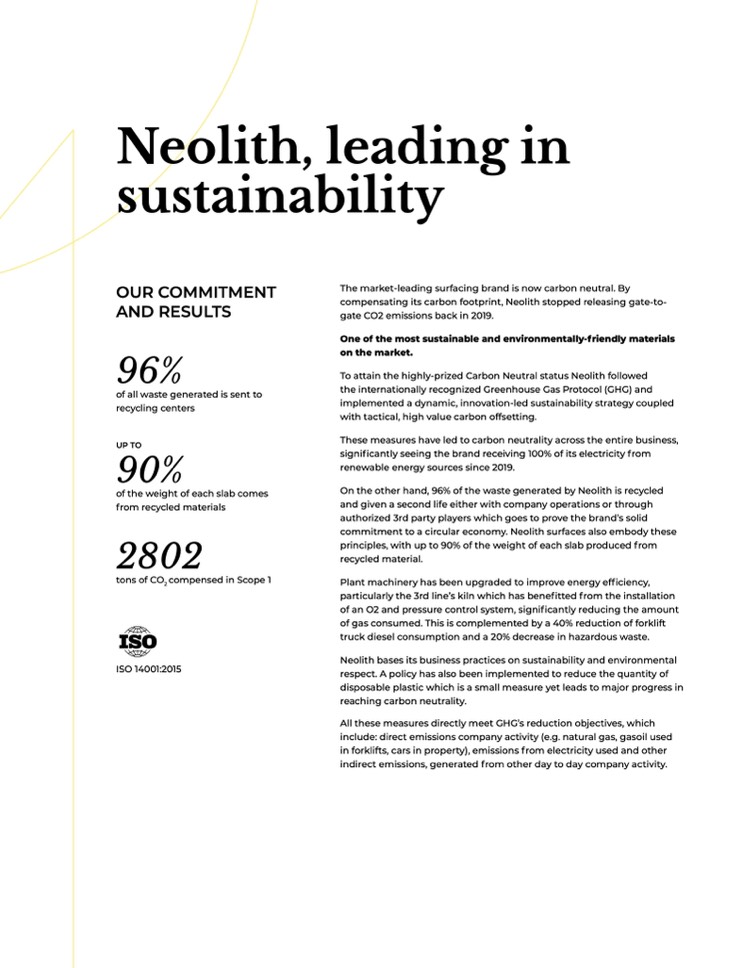
Neolith, leading in
sustainability
OUR COMMITMENT
AND RESULTS
96%
of all waste generated is sent to
recycling centers
UP TO
90%
of the weight of each slab comes
from recycled materials
2802
tons of CO
2
compensed in Scope 1
ISO 14001:2015
The market-leading surfacing brand is now carbon neutral. By
compensating its carbon footprint, Neolith stopped releasing gate-to-
gate CO2 emissions back in 2019.
One of the most sustainable and environmentally-friendly materials
on the market.
To attain the highly-prized Carbon Neutral status Neolith followed
the internationally recognized Greenhouse Gas Protocol (GHG) and
implemented a dynamic, innovation-led sustainability strategy coupled
with tactical, high value carbon offsetting.
These measures have led to carbon neutrality across the entire business,
significantly seeing the brand receiving 100% of its electricity from
renewable energy sources since 2019.
On the other hand, 96% of the waste generated by Neolith is recycled
and given a second life either with company operations or through
authorized 3rd party players which goes to prove the brand’s solid
commitment to a circular economy. Neolith surfaces also embody these
principles, with up to 90% of the weight of each slab produced from
recycled material.
Plant machinery has been upgraded to improve energy efficiency,
particularly the 3rd line’s kiln which has benefitted from the installation
of an O2 and pressure control system, significantly reducing the amount
of gas consumed. This is complemented by a 40% reduction of forklift
truck diesel consumption and a 20% decrease in hazardous waste.
Neolith bases its business practices on sustainability and environmental
respect. A policy has also been implemented to reduce the quantity of
disposable plastic which is a small measure yet leads to major progress in
reaching carbon neutrality.
All these measures directly meet GHG’s reduction objectives, which
include: direct emissions company activity (e.g. natural gas, gasoil used
in forklifts, cars in property), emissions from electricity used and other
indirect emissions, generated from other day to day company activity.

